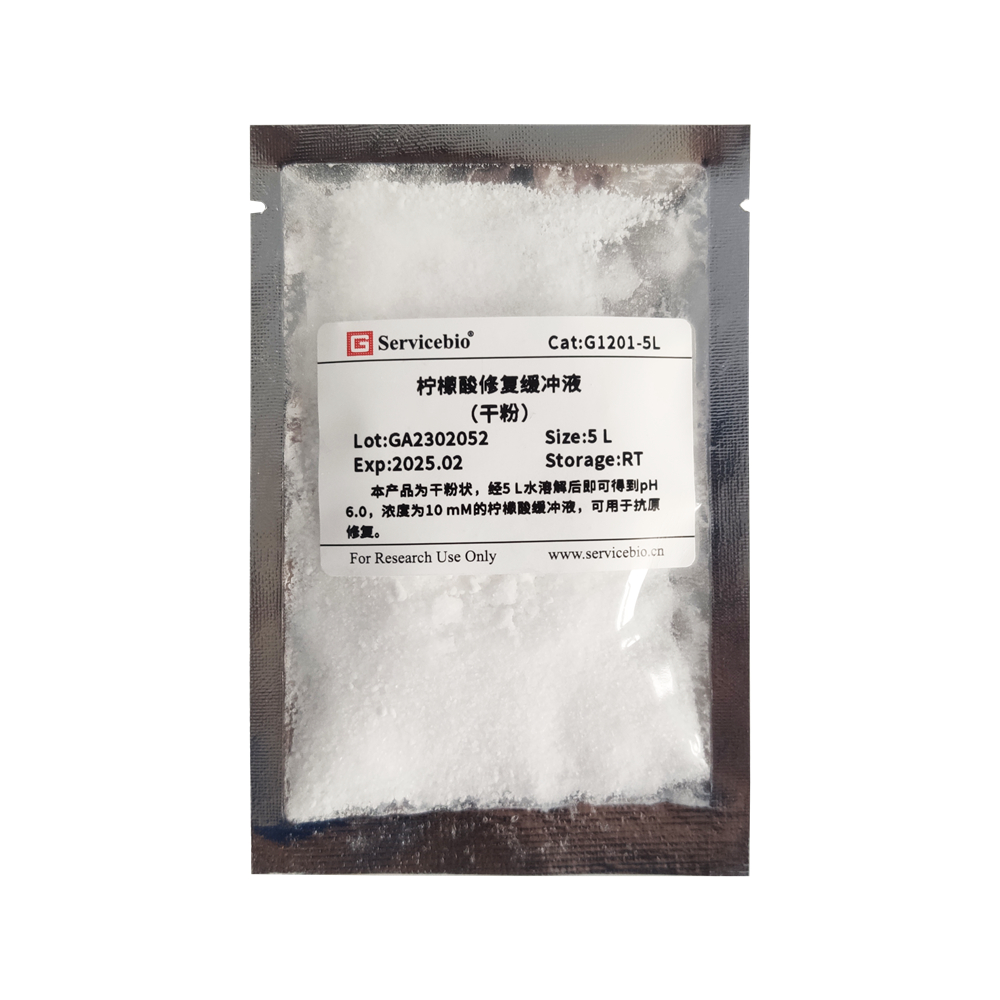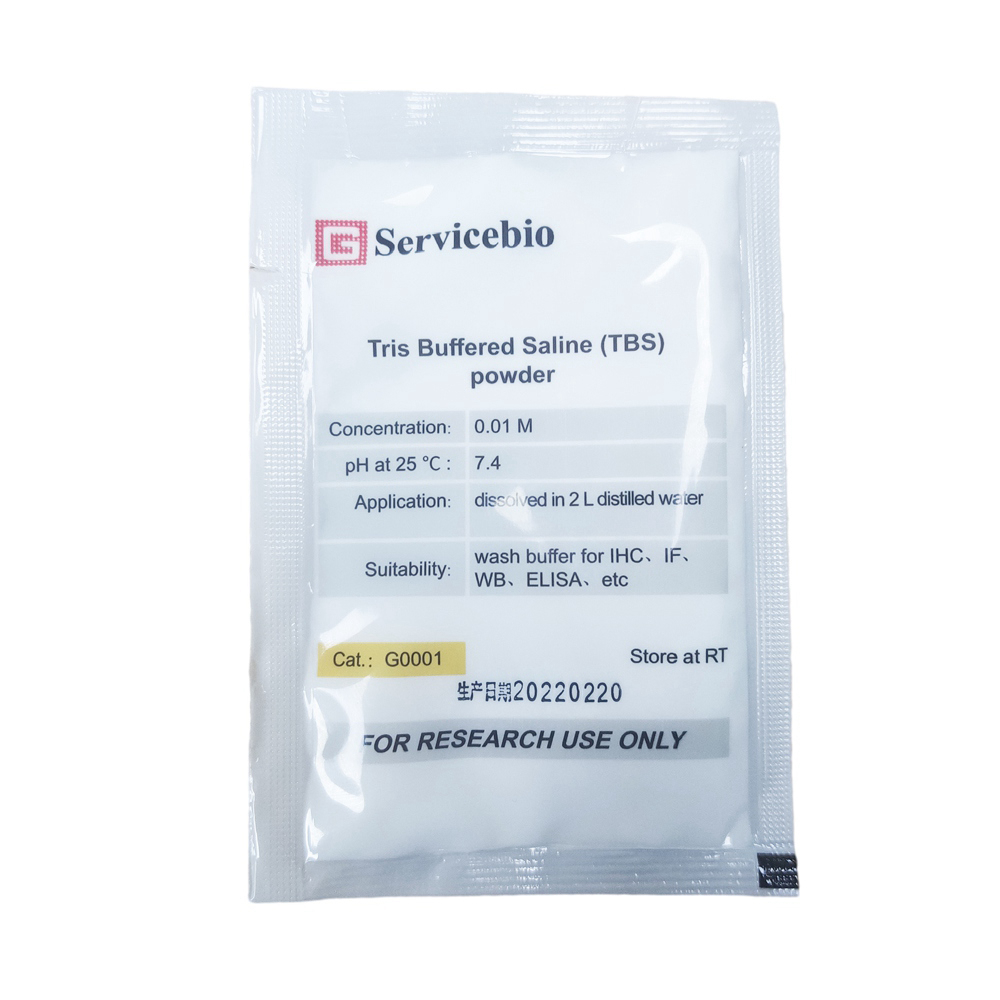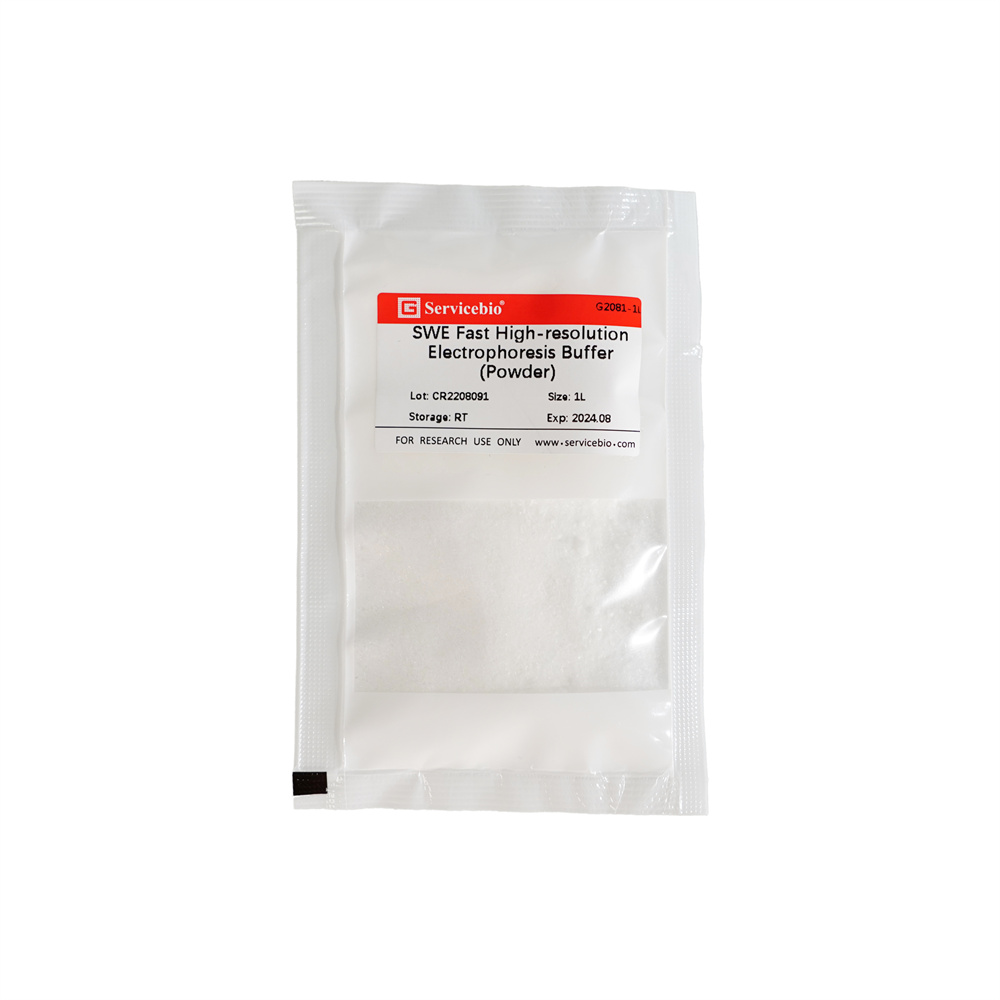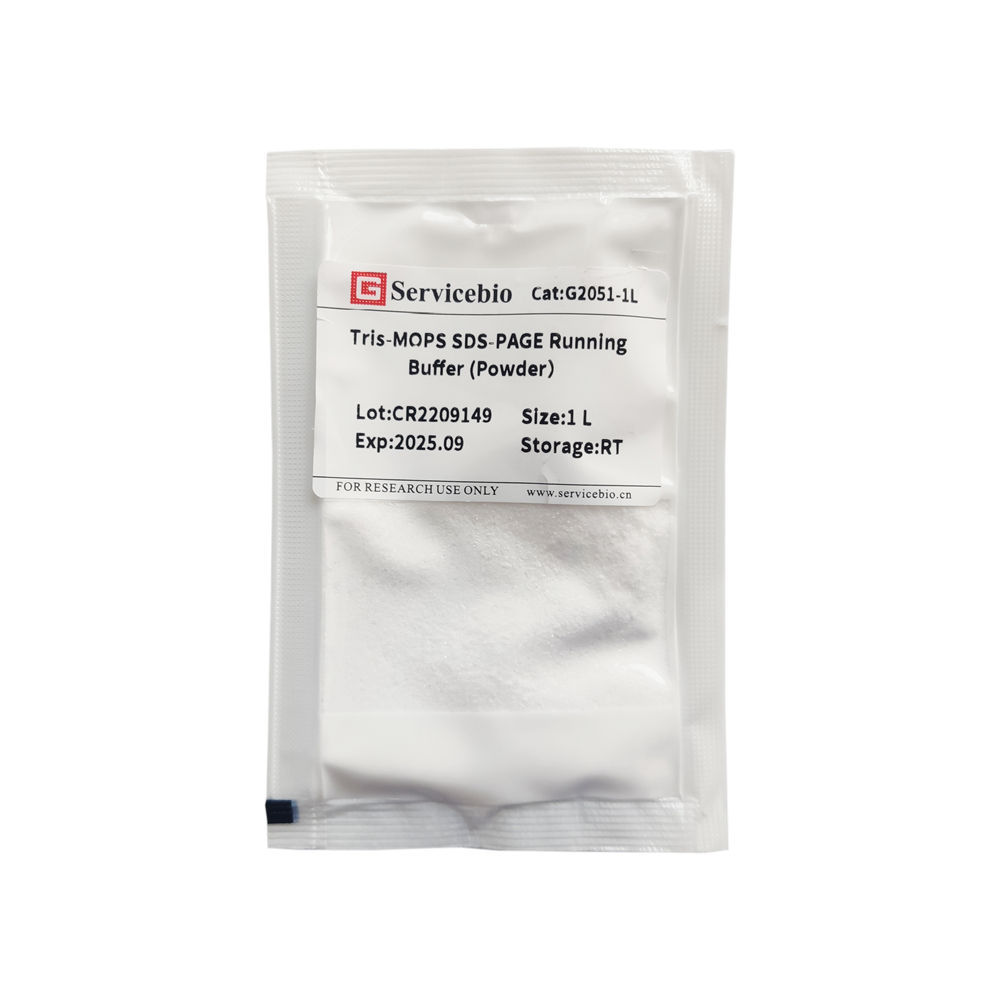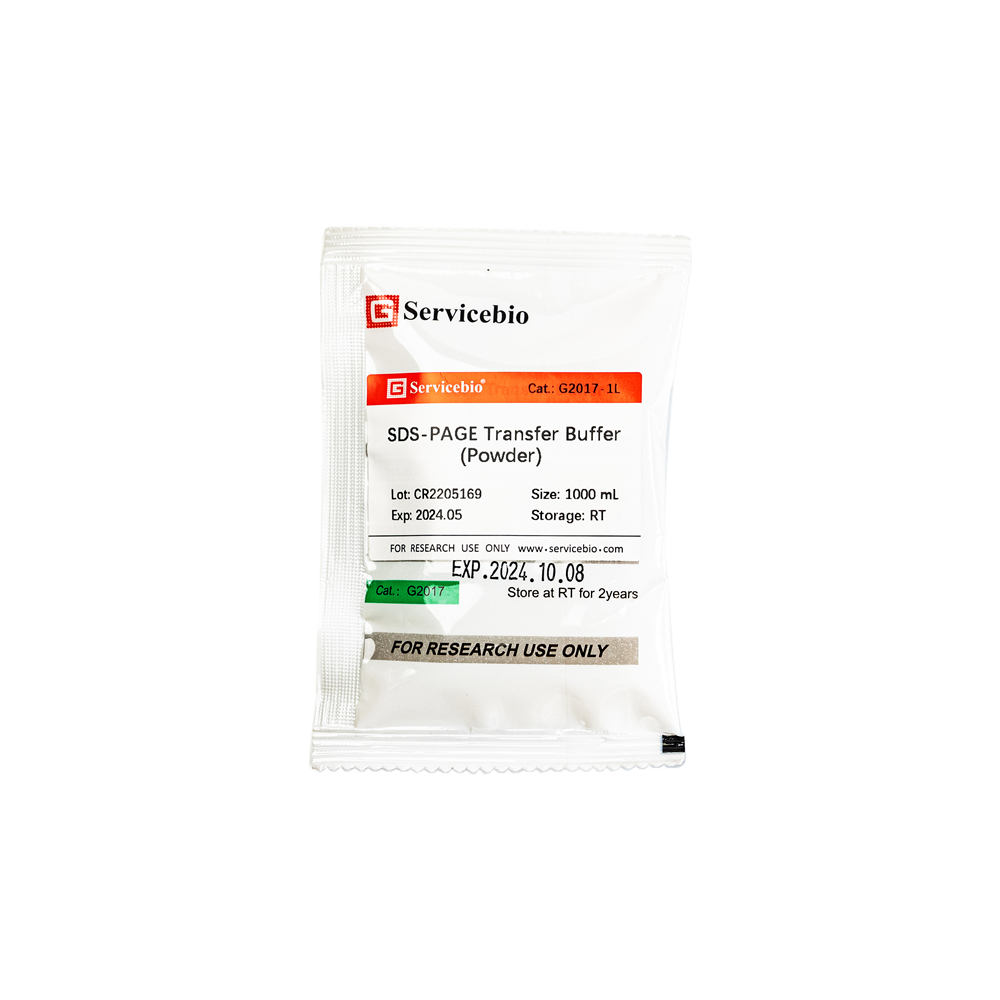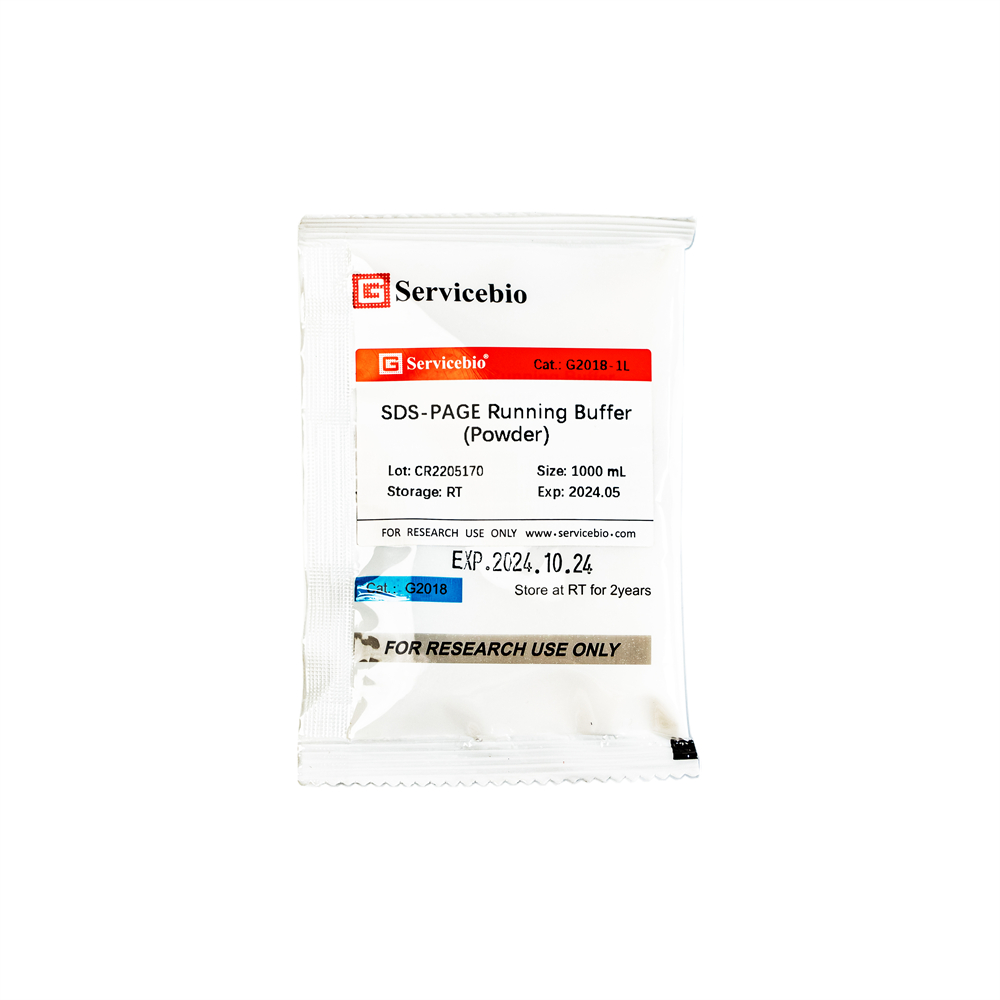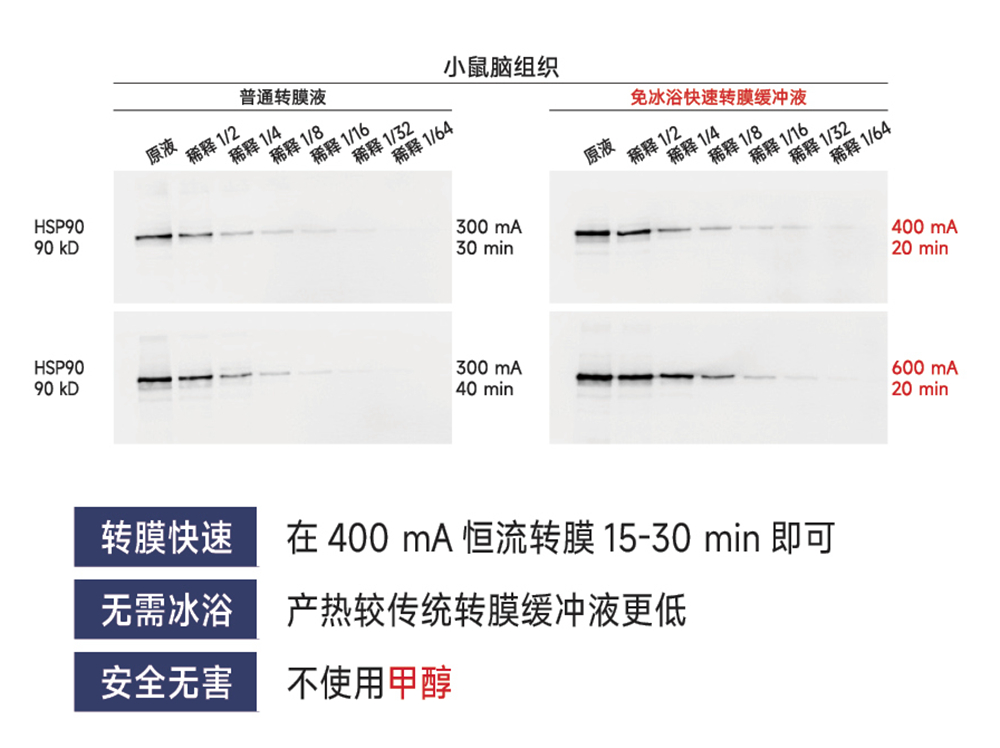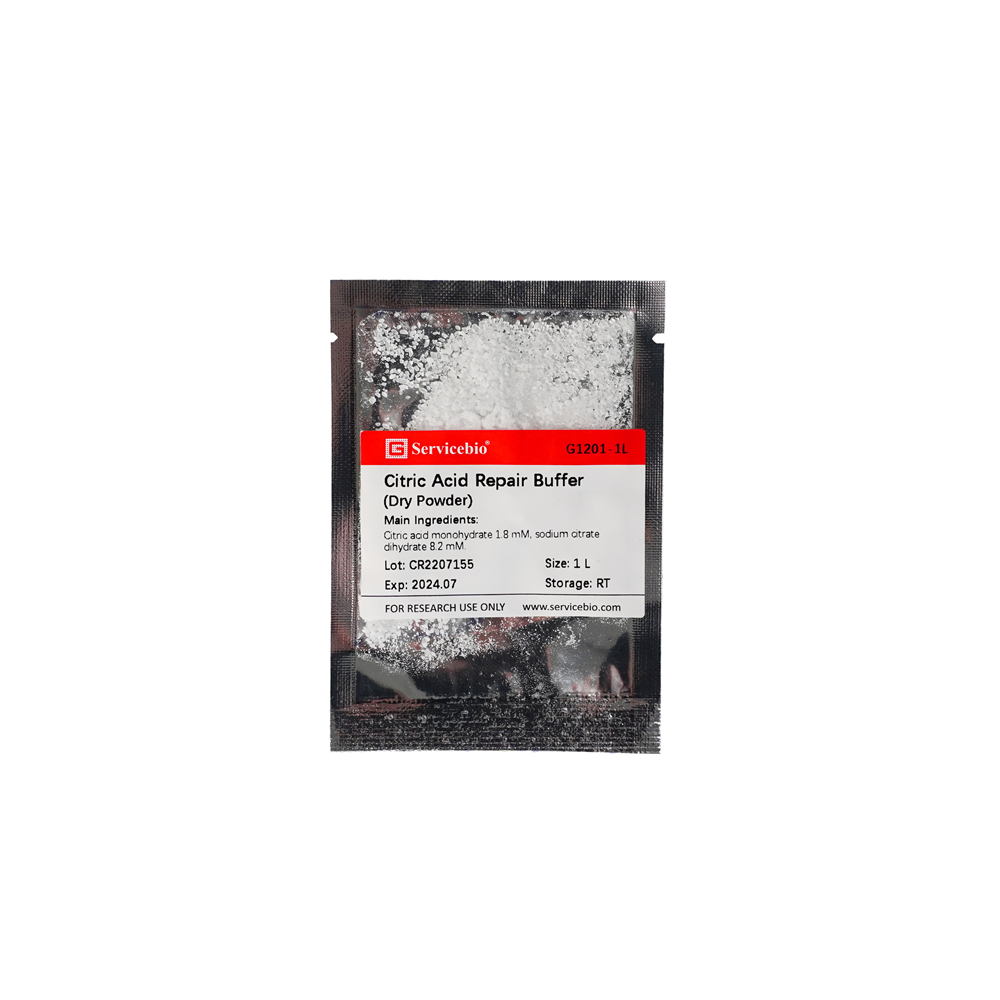Description
Product Information
| Product Name | Cat. No. | Spec. |
| Citric Acid Repair Buffer (Dry Powder) | G1201-5L | 5 L |
Product Description
After cells or tissues are fixed by paraformaldehyde, formalin or other aldehyde reagents, the antigenic determinants form aldehyde bonds, carboxymethyl bonds, and cross-linking between proteins, etc., causing changes in the spatial structure of the protein, so that the antigenic determinants are blocked, and the binding sites of the antigen and the antibody are reduced, which ultimately leads to a relatively weak positive detection rate and staining intensity of the antigen during immunolabeling, showing false negative or low positive rate. The protein cross-linking caused by aldehydes is reversible, and the original conformation of the protein can be restored under certain conditions such as high temperature or protease hydrolysis. This process is antigen retrieval. Antigen repair is a key step in the process of immunohistochemistry. There are many kinds of antigen repair methods. According to the characteristics of tissue types, different methods can be selected. Some are suitable for thermal repair, and some are suitable for enzymatic repair. The pH of the antigen repair solution also has many different choices due to the characteristics of the antigen. The company provides a variety of antigen repair solutions with different pH to meet a variety of antigen repair needs.
This product is a citric acid repair buffer, which is dry powder. After dissolving in 5000 mL water, a citric acid buffer with pH 6.0 and a concentration of 10 mM can be obtained, which can be used for antigen repair.
Storage and Shipping Conditions
Transport at room temperature; preserved in a cool and dry place, valid for 24 months.
Assay Protocol
Each packet of citric acid repair buffer ( dry powder ) is dissolved and clarified with 1000 mL of distilled water and can be used.
Note
1. Use as soon as possible after dissolution, long-term storage is not recommended.
2. Please wear a laboratory coat and disposable gloves during the operation.
For Research Use Only!

